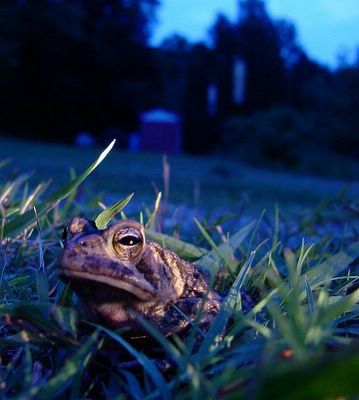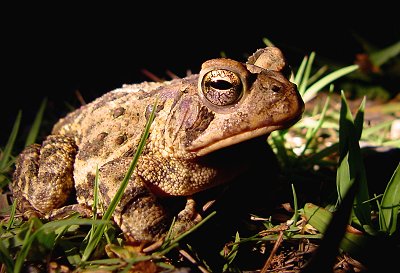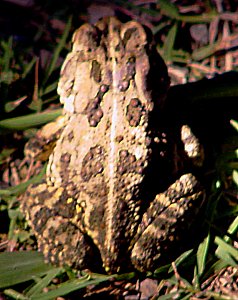
With the
Urbana bike temporarily in my possession and the
Surly bikes we rode last week-end, I have suddenly undergone a crash course in threadless stems. Though of course I have seen them on bikes before, now I got to actually play around with one and understand it firsthand.
In the world of classic and vintage bicycles, you will find a strong preference for threaded (quill) stems, and for good reason: Threadless stems are a fairly recent invention and their thick, boxy shape tends to clash with the more elegant lines of a lugged steel frame. In other words, they are considered "ugly." But I do not necessarily share this sentiment. While it is true that many - probably most - of the threadless stems we see on production bikes are clunky and offensive-looking, it does not have to be that way: Ugliness is not an inherent property of a threadless stem, but a byproduct of modern manufacturers generally catering to an "athletic gear" aesthetic. Elegant, polished alloy threadless stems do exist - made by the likes of
Nitto and
Velo Orange. Here is a nice fillet-brazed threadless stem and even a lugged one. Threadless stems can also be painted to match the frame of the bicycle, which to my eye actually works better than when the same is attempted with a quill stem. Even the simple, utilitarian stem on the
Urbana bike doesn't look at all bad: I think it suits this bicycle's chunky tubing and contemporary style.

Of course the other major criticism of threadless stems is a practical one, and it is one with which I do agree: While quill stems can easily be raised and lowered to adjust handlebar height, threadless stems cannot. When buying a new frame meant for a threadless stem, there is a process (which I only half-understand), whereby you decide on the handlebar height you want, and they cut the steerer tube accordingly, then attach the threadless headset, spacers, and stem. After that, the handlebar height you chose is fixed, and it is not entirely clear to me what the options are, should you change your mind down the road and want the handlebars raised or lowered.
With a pre-assembled bike there is even less choice, because the threadless stem is already installed and the handlebar height is predetermined without your involvement. For me, this system would pose a major problem - especially on a roadbike - as it usually takes me a
while to fine tune my preferred handlebar height on any given bike, and even after that I just occasionally feel like a change. With a threadless stem, I would be out of luck. If you are a novice road cyclist, this also makes it impossible to get yourself gradually accustomed to drop bars via the "lowering the stem" method I described earlier.

But while the lack of height adjustability is a drawback, I also discovered an unexpected benefit to the threadless stem: It is easier for me to work on. As mentioned before, I have problems with my hands that, frustratingly, make it mostly impossible for me to work on bikes. I know how to do most of the stuff and can give clear instructions to someone else, but typically lack the hand strength necessary to perform the operations myself. Not so with the
Urbana bike. I first noticed that I was able to work on this bicycle, when we were putting it together and I tightened a bolt that I normally wouldn't have been able to. Later, I wanted to change the angle of the handlebars, so I watched this instructional video and did it - loosening and retightening the bolts with no problems. By contrast, I cannot even budge the bolt on a quill stem on my own. If threadless stems are generally easier to work on, then it's nice to have this bit of independence.
What's your view on the benefits or drawbacks of threadless stems? Do you see them as out of the question on classic bicycles?




 Last weekend we decided to go to see Coronado State Monument which is just to the north of where we live near Rio Rancho, NM. in the town of Bernalillo, NM. First there was a sign telling us that these were the ancient ruins of Kuaua Pueblo. Kuaua is an old Pueblo word meaning 'evergreen'. Kuaua Pueblo (pueblo means 'town') was started in the 1300's and was made out of adobe which is a mixture of mud and straw that makes a good brick. By the 1500's it is thought that the town may have had as many 1200 rooms. This town is within sight of the Rio Grande River (this day we couldn't see the river as there were too many trees). These native Americans survived by hunting, fishing, and farming. They grew many of the same things that I now grow in my garden - squash, watermelons, corn, and beans. Corn was their staple food and was ground into a meal on special flat rocks using round rocks to make a meal which they used for a flat bread. This pueblo may have been a center for much trading among other tribes. The Spanish explorer Francisco Vasquez de Coronado
Last weekend we decided to go to see Coronado State Monument which is just to the north of where we live near Rio Rancho, NM. in the town of Bernalillo, NM. First there was a sign telling us that these were the ancient ruins of Kuaua Pueblo. Kuaua is an old Pueblo word meaning 'evergreen'. Kuaua Pueblo (pueblo means 'town') was started in the 1300's and was made out of adobe which is a mixture of mud and straw that makes a good brick. By the 1500's it is thought that the town may have had as many 1200 rooms. This town is within sight of the Rio Grande River (this day we couldn't see the river as there were too many trees). These native Americans survived by hunting, fishing, and farming. They grew many of the same things that I now grow in my garden - squash, watermelons, corn, and beans. Corn was their staple food and was ground into a meal on special flat rocks using round rocks to make a meal which they used for a flat bread. This pueblo may have been a center for much trading among other tribes. The Spanish explorer Francisco Vasquez de Coronado  had about 300 soldiers and 800 other Indians with him as well as about 1000 horses and other livestock. They spent the winter at Kuaua. This is where the monument got it's name of Coronado. It was excavated in about 1930 but many of the ruins that were above ground have disappeared with time and now most of the walls that you can see have been rebuilt to look like what was found. There was a square kiva or ceremonial chamber found underground that had many colorful murals in it. These murals can be seen in one special room at the visitors center but photos are not allowed so that more damage won't be done to them. I did find photos of them on a website and lots of information on them as well as the pueblo at these websites. The kiva can be entered and seen at some times but not on the day we were there. I did get to go into it when I was about 17 in about 1968. http://http://www.100megspopup.com/photo4phood/swarch/coronadohistory.html
had about 300 soldiers and 800 other Indians with him as well as about 1000 horses and other livestock. They spent the winter at Kuaua. This is where the monument got it's name of Coronado. It was excavated in about 1930 but many of the ruins that were above ground have disappeared with time and now most of the walls that you can see have been rebuilt to look like what was found. There was a square kiva or ceremonial chamber found underground that had many colorful murals in it. These murals can be seen in one special room at the visitors center but photos are not allowed so that more damage won't be done to them. I did find photos of them on a website and lots of information on them as well as the pueblo at these websites. The kiva can be entered and seen at some times but not on the day we were there. I did get to go into it when I was about 17 in about 1968. http://http://www.100megspopup.com/photo4phood/swarch/coronadohistory.html








.jpg) One of the neat things about this site is that climbers (just like you)
One of the neat things about this site is that climbers (just like you)  For those more concerned with access issues, here is the round up:
For those more concerned with access issues, here is the round up:  In 1992, Mary V. Reed compiled "Abstracts from Miscellaneous Delaware County Ohio Newspapers 1821-1857" and on page 49, citing the Ohio State Gazette and Delaware County Journal of September 16, 1830 is the entry: "Died in Liberty Township on the 27th ult. Mrs Ruth JOSLIN, aged 59 years wife of Mr. Johns JOSLIN."
In 1992, Mary V. Reed compiled "Abstracts from Miscellaneous Delaware County Ohio Newspapers 1821-1857" and on page 49, citing the Ohio State Gazette and Delaware County Journal of September 16, 1830 is the entry: "Died in Liberty Township on the 27th ult. Mrs Ruth JOSLIN, aged 59 years wife of Mr. Johns JOSLIN." From another "Joslin" researcher, I found out that Ruth's tombstone resides within the confines of the Delaware County Historical Museum, or at least it did several years ago. The inscription was transcribed as "Ruth wife of Jonas Joslin died Aug 27, 1830 aged 59 Years."
From another "Joslin" researcher, I found out that Ruth's tombstone resides within the confines of the Delaware County Historical Museum, or at least it did several years ago. The inscription was transcribed as "Ruth wife of Jonas Joslin died Aug 27, 1830 aged 59 Years."





























